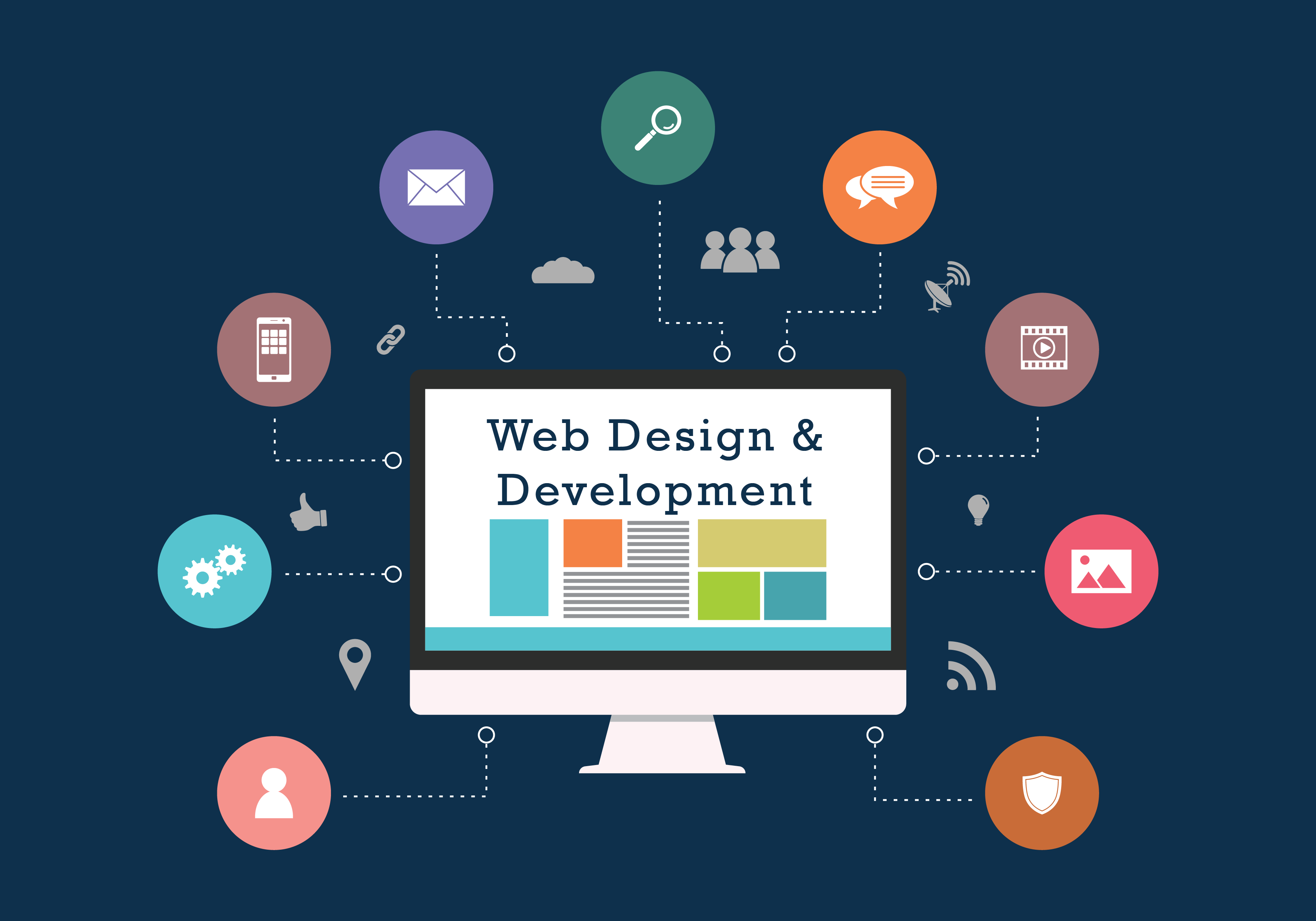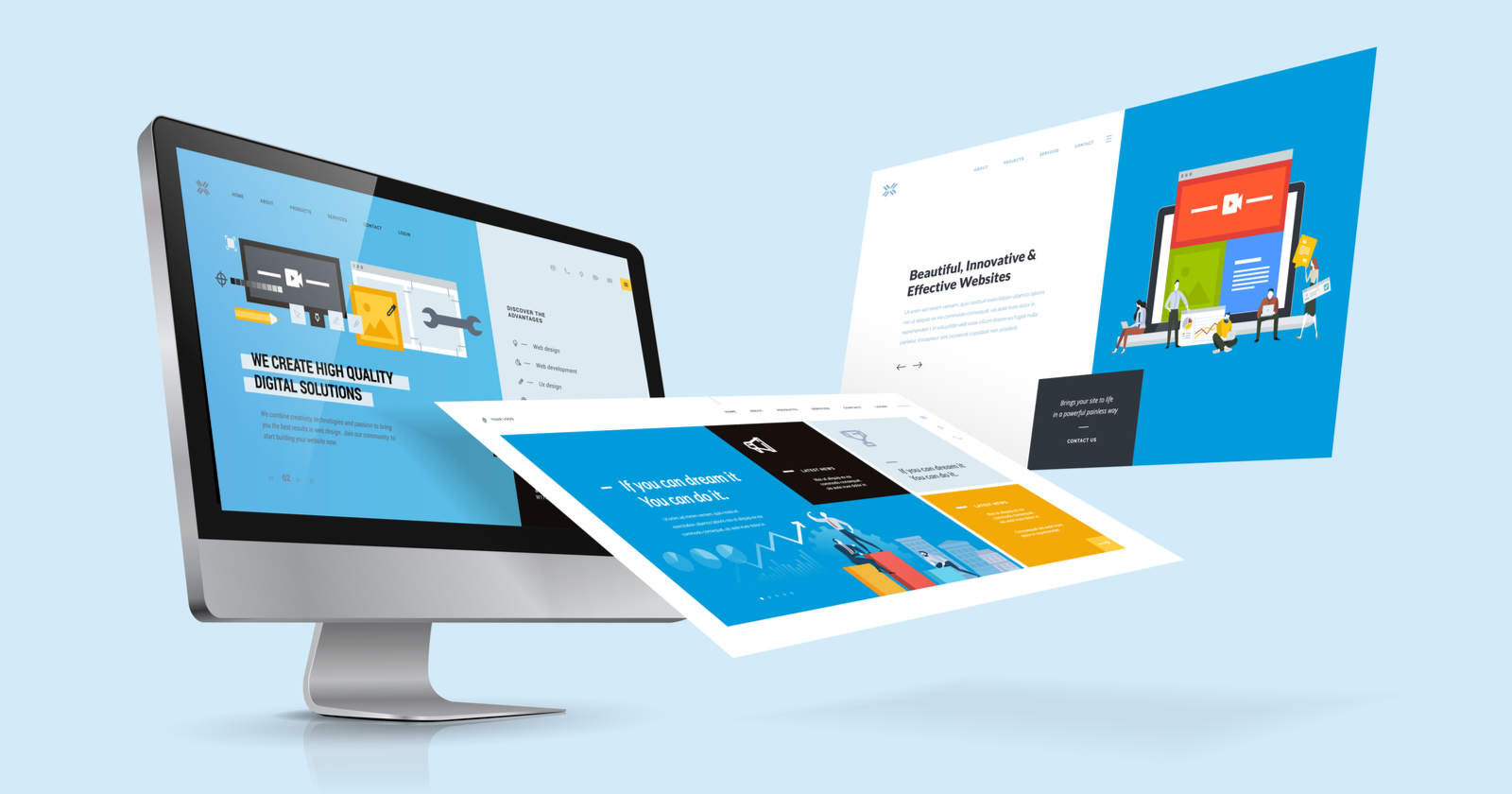Maximize User Experience With Ingenious Internet Site Design Solutions
In today's digital landscape, taking full advantage of individual experience via innovative site design solutions is imperative for businesses looking for to involve their audience efficiently. By embracing user-centric style concepts, organizations can create user interfaces that not only fulfill customer needs yet likewise enhance total satisfaction. Trick factors such as responsive formats, intuitive navigation, and reliable visual hierarchy play a crucial role in this process. Nonetheless, the integration of interactive aspects can better elevate the user journey, prompting a reevaluation of traditional design methods. When we think about the advancing assumptions of customers?, what strategies might emerge.
Comprehending User-Centric Layout

To apply user-centric layout effectively, it is essential to carry out detailed research study, consisting of individual meetings, surveys, and usability screening. These study methods supply important data that informs design choices, ensuring that the end product lines up with customer expectations. In addition, producing individual characters can aid developers understand and visualize with the end-users, assisting the layout procedure toward more relevant services.
In addition, iterative layout is a vital part of user-centric methodologies. By continually testing and refining styles based upon user responses, designers can identify pain points and locations of improvement, resulting in an extra sleek end product. Eventually, user-centric design is not just a stage in the advancement process but a continuous dedication to focusing on user demands, leading to more appealing and efficient digital experiences.
Significance of Responsive Layouts
As digital communications progressively occur throughout a range of tools, the relevance of responsive designs can not be overemphasized. A receptive design guarantees that a site adapts effortlessly to various screen sizes, from desktop displays to smartphones. This flexibility is important in today's multi-device landscape, where customers anticipate a appealing and regular experience no matter how they access content.
The main advantage of receptive design is boosted individual fulfillment. When a website is optimized for all devices, it minimizes the demand for zooming, scrolling, or horizontal navigating, which can irritate users and lead to greater bounce rates. In addition, search engines like Google prioritize mobile-friendly web sites in their ranking formulas, making responsive layouts important for reliable SEO strategies.
Rather of taking care of different variations of a site for various devices, a single, fluid design can be modified, saving time and resources. Inevitably, spending in receptive designs is not just a trend; it is a fundamental concept of modern-day web layout that dramatically enhances individual experience and interaction.
Enhancing Navigating and Availability
Effective navigating and ease of access are pivotal parts of a well-designed web site, substantially influencing individual involvement and fulfillment. An easy to use navigating structure permits site visitors to find info quickly and with ease, minimizing irritation and boosting the likelihood of repeat visits. Carrying out clear, detailed labels for navigation links, together with a rational power structure, can direct customers effortlessly through the website.
Availability is just as vital, making certain that all individuals, despite their capacities or specials needs, can engage with the site properly. This can be accomplished through using proper color contrasts, text dimensions, and alt text for pictures, which with each other boost the experience for aesthetically damaged individuals. Integrating key-board navigating and screen reader compatibility broadens accessibility for individuals with diverse needs.
Routine use testing can offer valuable understandings right into navigating effectiveness and accessibility concerns. By gathering comments from real users, designers can determine discomfort points and make educated modifications. Ultimately, focusing on navigating and availability not only fosters inclusivity but likewise cultivates a favorable customer experience, strengthening the brand's commitment to top quality and customer care in an increasingly electronic landscape.
Making Use Of Aesthetic Hierarchy Efficiently
Aesthetic pecking order works as an assisting framework in web site layout, routing users' interest to one of the most essential components on a web page. By purposefully arranging visual elements such as spacing, typography, and color, developers can create a clear pathway for individuals to adhere to. This structure not only boosts customer experience but likewise improves content comprehension.
One efficient way to establish visual hierarchy is through making use of dimension and scale. Bigger elements naturally draw in more interest, making headlines and essential visuals famous. Matching this technique with contrasting shades can further set apart key material from second details, making certain that necessary details stands out.
In addition, the arrangement of aspects plays an essential duty in assisting user communication. Using a grid format can develop a natural circulation, while whitespace helps to separate material and lower cognitive tons - Website Design. This intentional spacing allows individuals to refine details a lot more quickly, causing improved involvement
Last but not least, utilizing consistent design patterns helps enhance visual pecking order, providing users with familiar hints as they navigate the website. By focusing on these principles, developers can properly optimize customer experience, guaranteeing that site visitors can effortlessly locate the info they seek.
Incorporating Interactive Components
The consolidation of interactive components into website style can considerably improve individual interaction and total experience. Interactive functions such as tests, sliders, and surveys not just mesmerize customers however additionally advertise active engagement, making the searching experience much more unforgettable. By urging customers to communicate, web sites can properly keep interest and lower bounce rates.
In addition, incorporating vibrant content like computer animations and hover effects adds an click here for more appealing layer of interactivity. These aspects can direct users without effort through the website, highlighting essential information and phones i thought about this call to action. For circumstances, animated buttons can attract attention and enhance click-through prices.
Moreover, customization through interactive devices such as chatbots or suggestion engines enables web sites to satisfy private preferences, fostering a sense of connection. This tailored strategy not just improves customer complete satisfaction but likewise motivates repeat brows through.
Incorporating analytics devices to track communications offers useful understandings into individual actions, making it possible for continual renovation of the interactive elements. Inevitably, a properly designed interactive experience changes a passive surfing session right into an interesting journey, leading to increased customer complete satisfaction and loyalty. Incorporating interactive elements is vital for making the most of individual experience in contemporary website style.
Final Thought

In today's digital landscape, maximizing individual experience with cutting-edge website design remedies is critical for services looking for to engage their audience successfully. Ultimately, focusing on navigation and ease of access not only fosters inclusivity but also cultivates a positive user experience, reinforcing the brand's commitment to quality and customer care in a progressively digital landscape.

In final thought, making the most of user experience with my latest blog post ingenious website style options requires a dedication to user-centric principles. Website Design.